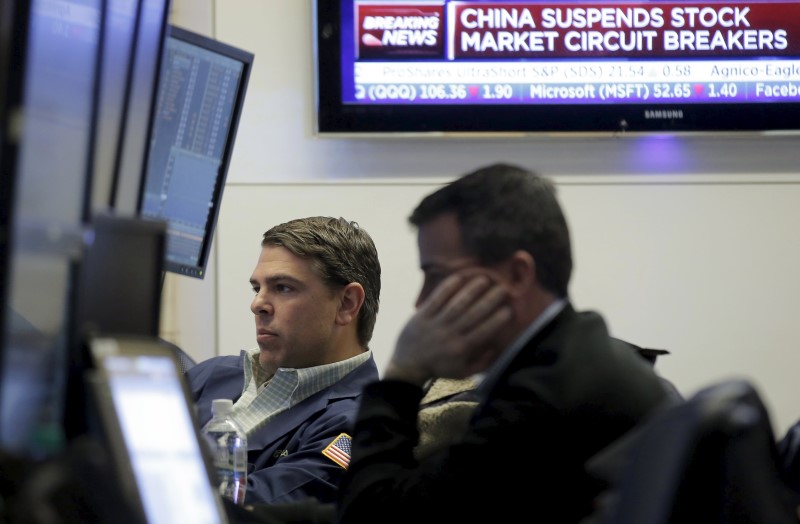By Caroline Valetkevitch
(Reuters) - U.S. stocks sold off further on Thursday, giving the Dow and S&P 500 their worst four-day starts to a year ever, dragged down by another drop in Chinese equities and oil prices at 12-year lows.
China allowed the biggest fall in its yuan currency
Oil prices (CLc1) (LCOc1) fell to 12-year lows and copper prices
"People see the weakness in China and in the overall equity market and think there's going to be an impact on corporations here in the United States," said Robert Pavlik, chief market strategist at Boston Private Wealth in New York.
"When you have a market that begins a year with weakness, people are sort of suspect anyway. The economy isn't moving all that well, the outlook is modest at best, and they don't want to wait for the long term. China creates more uncertainty."
The Dow Jones industrial average (DJI) closed down 392.41 points, or 2.32 percent, to 16,514.1, the S&P 500 (SPX) had lost 47.17 points, or 2.37 percent, to 1,943.09 and the Nasdaq Composite (IXIC) had dropped 146.34 points, or 3.03 percent, to 4,689.43.
The Dow has lost 5.2 percent since the end of 2015 in the worst first four trading days since the 30-stock index was created in 1928. The S&P 500 is down 4.9 percent since Dec. 31, its worst four-day opening in its history, according to S&P Dow Jones Indices, while the Nasdaq is down 6.4 percent.
Stocks extended declines late in the session, and the CBOE Volatility Index (VIX), the market's favored gauge of Wall Street anxiety, ended up 21.4 percent at 24.99, its highest since Sept. 29.
Investors also braced for Friday's U.S. government jobs report, which could show how well-insulated the U.S. economy is from international stresses.
Billionaire investor George Soros, speaking at an economic forum in Sri Lanka, drew similarities between the present environment and the financial crash of 2008. He said global markets were facing a crisis and investors needed to be very cautious, Bloomberg reported.
Apple (O:AAPL), which generates a lot of its business in China and is still the most valuable U.S. company, fell 4.2 percent to $96.45, its lowest since the August market swoon.
Yahoo (O:YHOO) fell 6.2 percent to $30.16 after Business Insider reported the company was working on a plan to cut its workforce by at least 10 percent. Alibaba (N:BABA), in which Yahoo has a stake, was down 6 percent at $72.72.
Volume has been heavy this week. About 9.9 billion shares changed hands on U.S. exchanges Thursday, well above the 7.2 billion daily average for the past 20 trading days, according to Thomson Reuters data.
Declining issues outnumbered advancing ones on the NYSE by 2,704 to 415, for a 6.52-to-1 ratio on the downside; on the Nasdaq, 2,492 issues fell and 390 advanced for a 6.39-to-1 ratio favoring decliners.

The S&P 500 posted one new 52-week high and 82 new lows; the Nasdaq recorded 16 new highs and 302 new lows.